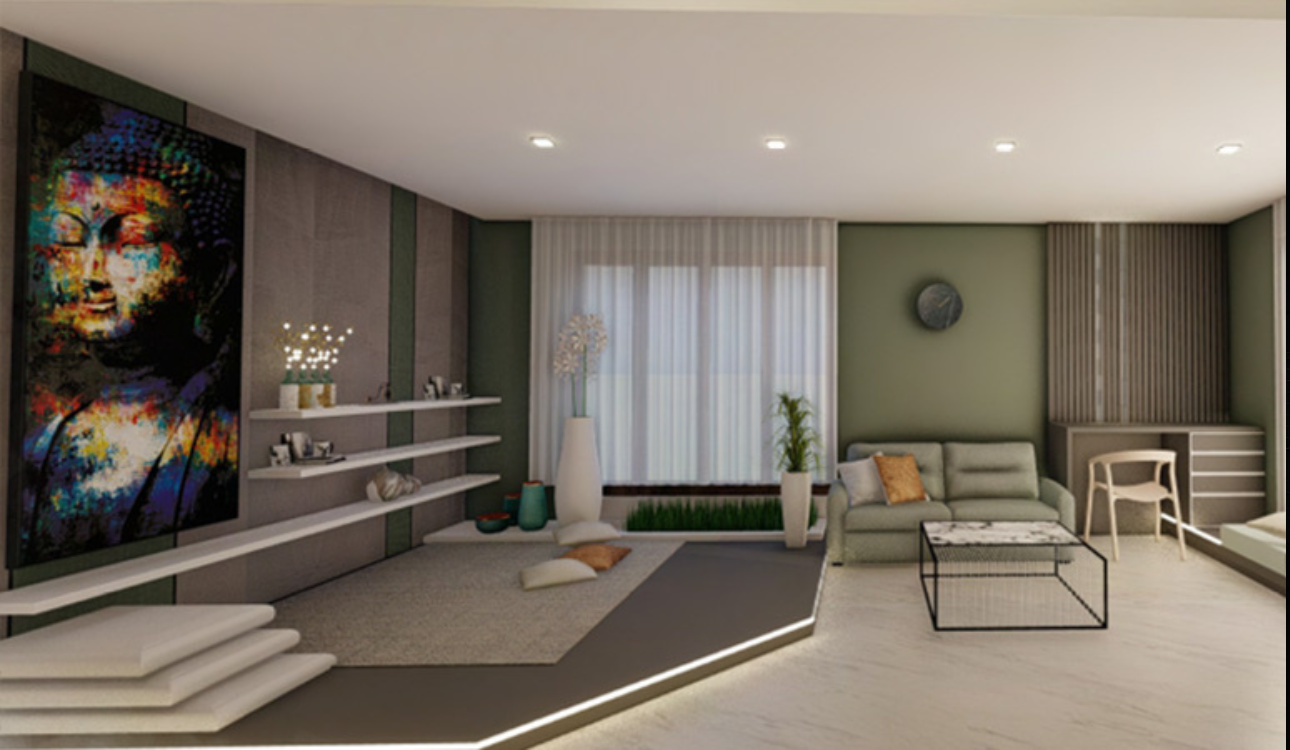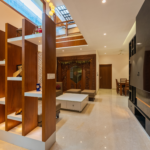Finding peace and calm in our living areas is becoming more and more important in today’s hectic society, where disorder frequently rules. A clutter-free, visually appealing space that nourishes the mind and spirit is what minimalist interior design has come to represent. Minimalist design, which has its roots in the idea that “less is more,” emphasizes purpose, functionality, and clean lines. Here is all the information you need to embrace minimalist interior design, whether you’re remodeling your house or looking for ideas for a new area.
The Theory At the Core of Minimalism
Minimalism is a style of living that goes beyond just aesthetics. Minimalist interior design is fundamentally about removing extraneous elements and emphasizing what is necessary. The movement, which emphasized intentional life, clarity, and purpose, was inspired by 20th-century contemporary art and architecture. Minimalism promotes a sense of calm by simplifying and decluttering, enabling residents to breathe freely in their own homes.
The Fundamentals of Interior Design Minimalism
1. A palette of neutral colors:
Neutral color schemes characterized by whites, grays, beiges, and subdued tones are common in minimalist interiors. These hues provide a serene and roomy ambiance that acts as a blank canvas for the room’s other components.
2. Functionality First:
In a minimalist home, each piece of décor or furniture has a specific function. In order to ensure that every object adds to the overall harmony of the room, functionality takes precedence above decorative excess.
3. Clean Lines and Geometric Shapes:
Minimalism is characterized by its formal simplicity. Clean lines and geometric shapes are used in architectural details and furniture rather than excessive or complex patterns.
4. Decluttered Spaces:
Superfluous clutter is absent from a minimalist home. A spacious, welcoming, and calm atmosphere is produced by open areas and sparse furniture.
5. Natural Materials and Textures:
Designers use natural materials like wood, stone, and linen to avoid minimalism and appearing sterile or cold. These components preserve the simplicity of the design while adding warmth and texture.
6. Lighting Strategy:
A key component of minimalist home design is lighting. Large windows and translucent curtains let in as much natural light as possible, and in the evenings, gentle, ambient lighting adds to the atmosphere.
Minimalist Interior Design Types
1. Contemporary Minimalism:
This design approach emphasizes great utility while incorporating clean and modern designs. Furniture is frequently sleek and well-finished, combining style and functionality.
2. Scandinavian minimalism:
Scandinavian style blends natural materials like wool and wood with neutral hues to highlight comfort and practicality. This design is perfect for making rooms feel cozy and welcoming.
3. Minimalism in Industry:
Clean and open layouts are combined with urban aesthetics in industrial minimalism, which features rough and raw components like exposed brick, concrete, and metal.
4. Japanese minimalism:
Japanese minimalism emphasizes harmony and simplicity and has its roots in Zen philosophy. Low furniture, organic textures, and a close relationship to nature are common features of spaces.
5. Bohemian Minimalism:
This design, which combines earthy hues, soft textiles, and varied yet functional décor with a clutter-free appearance, combines bohemian appeal with minimalist ideas.
6. Minimalist Luxury:
Using luxury materials like marble, glass, and fine linens is the main goal of this strategy. It maintains simplicity while producing an elegant and luxurious vibe.
Benefits of Minimalist Interior Design
1. Improved Clarity and Focus
A space free of clutter encourages mental focus and lessens distractions. Spaces that are minimalistic foster a sense of serenity and order, which makes them perfect for productivity or leisure.
2. Classic Appeal
Your interiors will stay fashionable and current for many years to come thanks to minimalist design, which steers clear of fads. Durability and longevity are ensured by prioritizing quality over quantity.
3. Eco-Friendly Lifestyle
Sustainable living is promoted by minimalism, which emphasizes fewer but better-quality things. This method promotes thoughtful consumption and lessens waste.
4. Simple Upkeep
Minimalist homes are easy to clean and maintain because they have fewer belongings and simpler designs. Homeowners may concentrate on what really important because this saves time and effort.
Typical Myths Regarding Minimalism
1. It’s chilly and unwelcoming
Despite emphasizing simplicity, minimalism need not come across as impersonal. A warm and inviting ambiance can be produced by incorporating textures, organic materials, and individual accents.
2. It’s Pricey
Quality, not price, is the focus of minimalism. To get the look, you don’t have to spend money on luxury goods. Make deliberate purchases and reuse old items to match the style.
3. Only Use It in Compact Areas
Minimalism is equally effective in larger places as it is in small houses. Any size home can benefit from the decluttering and simplicity concepts.
How to Design a Minimalist Interior
1. Eliminate clutter without being ruthless:
Start by assessing your possessions and retaining only those that are useful or enjoyable. Sell, recycle, or donate things that don’t fit your lifestyle any longer.
2. Invest in High-Quality Items:
Make thoughtful and well-made furniture and décor choices. A modern dining table or a sleek sofa are examples of statement pieces that may anchor a space without overpowering it.
3. Maintain a Consistent Color Scheme:
To achieve visual harmony, use the same color scheme throughout your house. For contrast, incorporate delicate bursts of color into textiles or artwork.
4. Make Storage Solutions Better:
Use clever storage options, such built-in cabinets or multipurpose furniture, to maintain a clutter-free and orderly workspace
5. Include Greenery:
An excellent approach to bring vitality and life to minimalist spaces is with indoor plants. To keep things simple, choose low-maintenance types like snake plants or succulents.
Conclusion:
More than just a fad, minimalist interior design is a classic method of designing rooms that are elegant, functional, and simple. You may create a house that promotes calm and clarity by concentrating on the necessities and getting rid of extraneous items. Whether you’re contemplating a minor adjustment or a major overhaul, minimalism provides a novel viewpoint that speaks to the contemporary desire for intentionality and balance. SR Creations, the best interior designers in Bangalore, specializes in crafting minimalist interiors that blend simplicity with sophistication Unlock your space’s potential now and embrace the beauty of simplicity!





